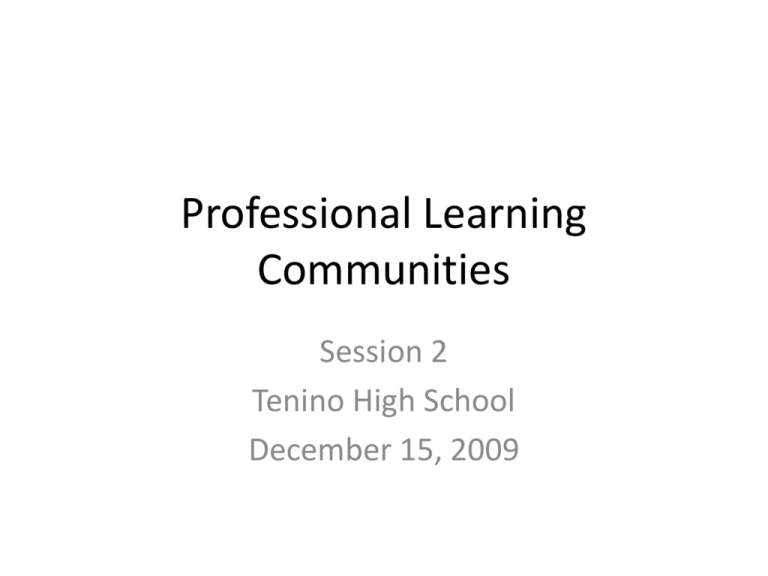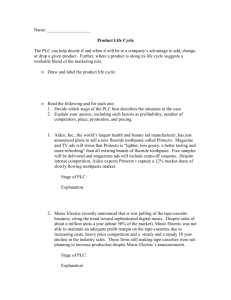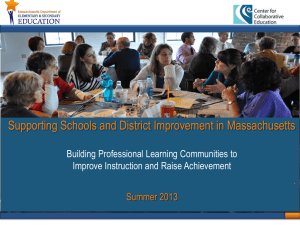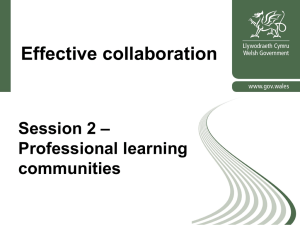Why Protocols?
advertisement

Professional Learning Communities Session 2 Tenino High School December 15, 2009 Roles Norms Session Overview • Part I: Culture and Climate • Part II: Exploring Readiness Data • Part III: Essential Conditions Today’s Learning Targets Outcomes and Targets • Teams will be able to articulate the difference between culture and climate, and describe how their culture influences PLC work. • Using a data protocol, teams will analyze their readiness survey results • Teams will identify 5 strengths and 5 areas of need, and develop an initial plan for their next steps. Connecting to Prior Learning What has been the focus of your PLC journey? Conditions for a Cultural Shift Essential Conditions for PLCs to “grow” are supported through structural and collaborative changes. “Restructuring can facilitate the process and is often a prequisite for moving forward, but merely changing the structures is never sufficient in creating PLCs.” DuFour Culture and Climate Culture = Personality Climate = Mood Changing Personality • Exploring Christmas Carol…What does it take to change Scrooge’s Personality? (Or anyone’s for that matter?) • What are the parallels for shifting a school’s culture? T-Chart What influences your school’s culture (Personality)? How are your PLC processes influenced by culture? What influences your school’s climate (mood)? How can your PLC processes influence climate? Culture in a PLC A disposition toward reflective practice, a willingness to change and a collective culture of high expectations are critical to lasting improvement. What is your culture of your PLC? Assessment- PLC Readiness Survey or Tracking Cultural Shifts in a PLC Leadership and PLCs “Creating a culture of inquiring rather than continuing to work in a culture of isolation represents a significant change within schools that must be supported. Systems success in improving student learning are characterized by: •Articulated norms and values •A focus on student learning •Reflective dialogue •Collaborative practices •Deprivatization of teaching” Robert J Garmston co-founder of Center for Adaptive Schools *PLC Leaders support by… • Providing resources (space, time, materials) • Providing an Instructional focus • Structures and procedures such as protocols to guide their time together • Refocus staff to “begin with the end in mind” • Model learning *PLC Leaders are administration and teacher leaders. Why Protocols? Structure that supports community Clearly define roles Create psychological safety through structures Are used purposefully Define time, expectations, procedures and products Builds trust through safe interactions Data Protocol • Getting started (5 minutes) • Describing the data (10 minutes) • Interpreting the Data (10 minutes) • Work Place implications (10 minutes) • Reflection (10 Minutes) Conditions 5 Strengths with Evidence Conditions Deprivitization of Practice Evidence “We shared ideas for pre-writing strategies. We discussed how to develop a grade level rubric. We are setting a schedule for peer observation.” Action Plan Conditions Areas of Growth Conditions Time to meet and talk “Short Term Win” Class coverage Action Steps (Who? What? When?) Reflection and next steps • What will you share with staff as a result of tonight? • How did your team model effective group norms? • What follow-up or support do you feel you need?









